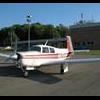MOONEY WOULDN'T START TODAY!!!
-
Members Online
- redbaron1982
- Rmnpilot
- stang2nv95
- Van Lanier
- Kenfen
- alextstone
- LANCECASPER
- Andy95W
- merlin
- Woodslayer
- Schllc
- NickG
- patrickf
- Matt M
- DMM
- bushuenj
- Planegary
- MisfitSELF
- EricJ
- MDMooney
- MB65E
- TCC
- kortopates
- Phil EF
- Jake@BevanAviation
- Yanyen
- Scottknoll
- tomgo2
- KSMooniac
- Fly Boomer
- Slick Nick
- Lax291
- georger
- philiplane
- Ron McBride
- Shortround
- gevertex
- Glen Davis
- William A
- hammdo
- Echo
- DCarlton
- toto
- qbh borescope
- bigmo
- 30X


Recommended Posts
Join the conversation
You can post now and register later. If you have an account, sign in now to post with your account.